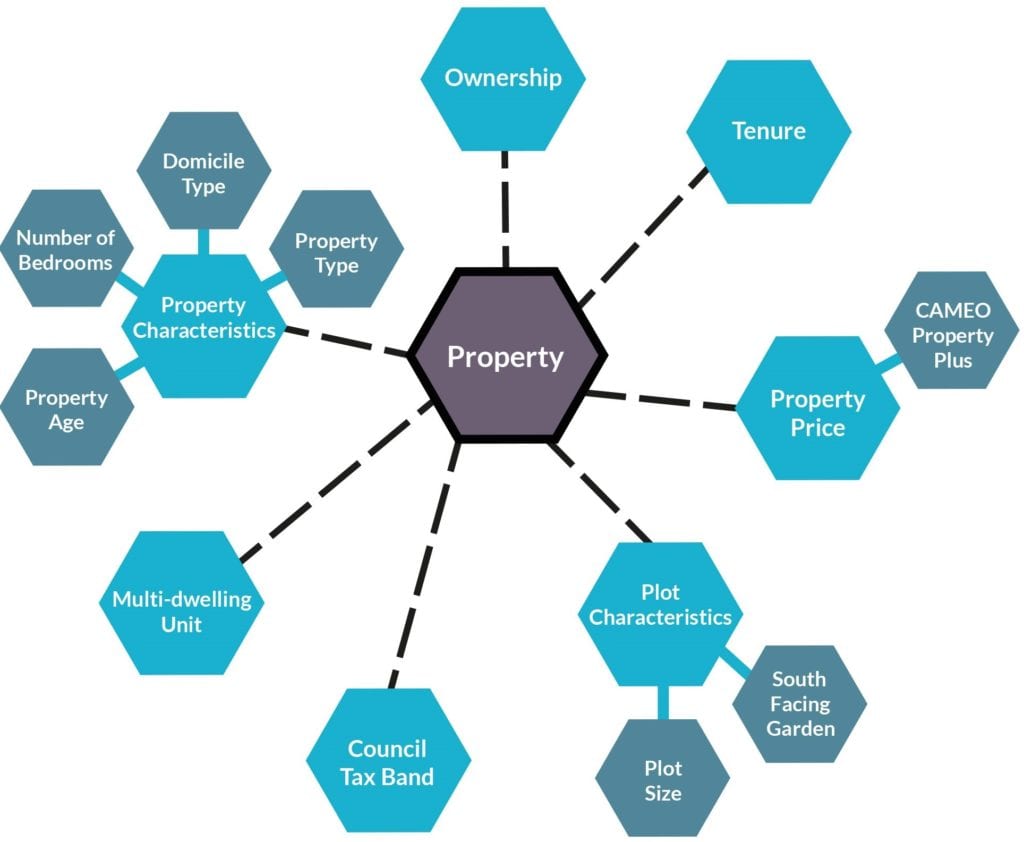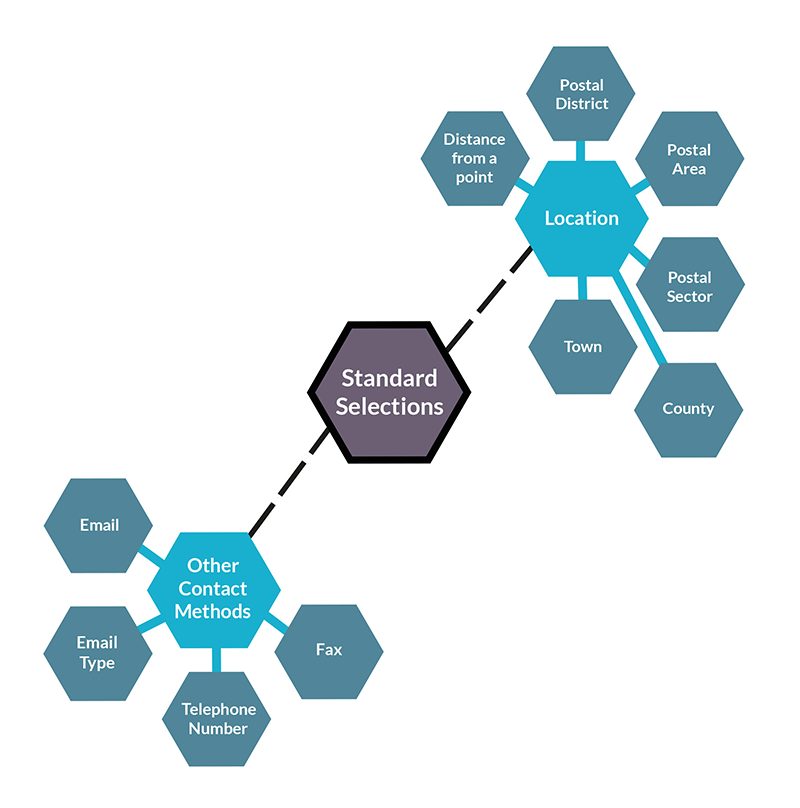Multi-touch campaigns vs a solus campaign. What works best?

So what works best; a multi-touch marketing campaign or a solus email.
Well let’s start a brief explanation of each. Multi-touch is just that, it’s a marketing campaign which uses various channels such as email, mail, SMS, phone. The idea is that by combining different approaches you get in front of the customer in a number of ways, with a coherent message, helping you stay front-of-mind when it’s time to purchase / interact.
A solus campaign is just one chance to hit the customer with one message through one channel.
Get your timing wrong
Get your timing wrong with a solus email campaign and you’ve missed your chance. Whereas with a multi-touch campaign if your timing isn’t ideal first, second or even third time round you still have chances to reach your audience.
Tell a story
With a solus email you have one chance to get your message across, this may mean needing to include quite a lot of information to cover everything in your one hit. But too much information can be too much for the reader to absorb, disengaging them.
A multi-touch campaign allows you to tell a story, you can build up your messages, your proposition, your offers and your calls to action.
What data?
Consumer and business data comes in many forms, so it’s important that you know whether you want to run a solus or multi-touch campaign before you purchase. This will ensure that your data will work hard for you.
Single use data is ideal for the solus campaign. As the name suggests you get one use out of the data, you then need to delete it to ensure you are being compliant and within the law. It’s worth noting that data is ‘seeded’ to ensure it’s regulated, so any improper use beyond the licence terms will be flagged. And you could be subject to a fine.
Purchasing multi-use consumer or business data gives you much more flexibility when planning and running multi-touch campaigns. This type of licence allows you to use the data a set number of times within an agreed period. This allows you to tell your story to prospects and nurture them with the aim of converting them to customers. Again, multi-use data will be seeded, so to remain compliant ensure you’re aware of, and abide by the licence terms to ensure you don’t end up with a fine (and a bad reputation).
We don’t see Christmas cards as an inconvenience

So the days are getting shorter and the temperature has dropped, we’re really starting to move into winter and of course the hectic… Christmas season.
So as a business how are you planning on spreading joy this year? A print, or more recently ecards are a popular way, but is 2016 still the season of the Christmas card – do they still have a place in today’s Christmas climate?
Well at MarketingFile we say they do for a variety of reasons:
We don’t see Christmas cards as an inconvenience
At MarketingFile we take the ‘effort’ out of your cards, you just need to personalise a card, we then print and post (from just £1.10 per card) or broadcast for you (from 3p per email address). Choose from a pre-designed card, or use your own creative.
You just need to plan early
Is it just us … or does Christmas seem to start earlier and earlier every year? Before you realise there’s so much to do and cards seem less important. If you start planning now you can take your time to run a Christmas card campaign that will really work for you, and also take advantage of early savings.
Other marketing campaigns are planned in advance – and Christmas cards should be managed as a campaign; as when executed correctly will drive results.
The cost
There is an outlay to cards, but you need to think about your return on investment – connecting with a lapsed customer, more recent customer or prospect could help you get 2017 off to a very good start with renewed or new business.
Rather than sending cards to everyone, if cost is a concern, cherry-pick contacts and reach out to them.
Reach prospects
Christmas cards are a great opportunity to reach prospects, and it shows you’re willing to go that bit further than competitors in getting their attention. And furthermore it serves as a reminder about what you can offer them.
Reconnect with lapsed customers
Cards are the perfect excuse to reconnect with lapsed customers. Remind them where you are, maybe include a special offer to get them to return to you. This is where personalised cards come into their own, as you can segment messages for different groups.
Show some appreciation
Sending a personalised card shows you’ve taken the time to think about your customer, making them feel appreciated for their custom – which is good for your brand. It also helps to keep you front of mind during the busy festive trading period.
Reach the right inboxes

Data is only one aspect of email campaign success, getting your message into the inbox of your prospects is crucial.
With this in mind, for just a £25 set-up fee, if you purchase consumer data from MarketingFile we will send your email at no charge to all contacts.
This means you can start to build a new prospect list, for just 25p per sent email address.
Contact Laura Moore for further details. She can then discuss your consumer data requirements and the email broadcast:
> Email [email protected]
> Phone 01462 424 626
Christmas cards (yes we know it’s October)

Here at MarketingFile we’re busy helping our clients create and send their personalised Christmas cards as part of a complete package.
By working with us this year you can take advantage of our ‘Super-Early Santa’ prices and save; with a personalised card printed AND posted from £1.10 or an email card sent at 3p per address.
Choose from a selection of 20 print cards and 8 email cards:



Alternatively, if you would prefer a bespoke card designing AND sending, contact us and we’ll talk through your options.
Remember we can provide business and consumer data if you’re planning Christmas campaigns to prospects.
Busy now but want a reminder? Tell us and we’ll contact you before prices increase on 31st October.
Why you need to be ready now for your Christmas campaigns

The clocks haven’t changed yet, but now is the critical time to be considering your Christmas campaigns.
With an estimated 20% of annual sales generated in December it’s critical you’re in front of customers, and prospects. Consumers have money to spend over the festive period so make sure they spend with you – not a competitor. This is where early planning can get you the edge.
Be prepared
By being prepared early you’ll have more time to spend planning, a longer window to execute campaigns and more time to match messaging to customers/prospects.
You will also have a longer lead-time during which you can be front-of-mind with your target audience.
Email campaigns
Use seasonal imagery; after all you want to stand out as a Christmas campaign.
A single solus email may not be enough, you’ll need to nurture targets through sending a series of emails. However keep your emails fresh throughout the campaigns – even small tweaks can make a difference from one email to another.
Use a good subject line to help increase open rates. You need to garner interest during this busy period and with competitors likely to be targeting your customers and prospects it can be harder to stand out. With this in mind, ensure your emails are also mobile-friendly with a very clear call to action.
Monitor and adapt emails, use segmentation to speak to different prospects differently. Tailor messages to appeal to different demographics.
Finally, as your emails will most likely drive traffic to your website make sure it can cope with an increase in traffic on the back of successful campaigns! Also check that it’s up-to-date with seasonal content related to the campaign.
Who do you want to reach?
If you’ve purchased prospect data to target then make sure you use it, you’ve invested in it so make it work for you. Do ensure you’re compliant with licence terms for data use, for example single-use means just that; whereas a multiple-use licence allows you to use re-use data. Remember, it’s likely that purchased data will be ‘seeded’ so never be tempted to misuse data as you could be found out and fined.
Don’t think large data numbers will yield improved results, it’s better to work with prospects who are suited to your organisation for less wastage and better ROI. By targeting correctly you’ll most likely be reaching fewer contacts, but your message will resonate with them more.
Ensure you have good data which allows you to personalise emails (and make your chosen email system allows dynamic content to achieve this). But … only do this if you are confident your data is accurate. A wrong salutation will deter the reader right from the start and result in a wasted opportunity.
Finally, prioritise clickers to future follow-up campaigns. These are warm leads so don’t ignore them – again ensure you’re using an email system with in-depth reporting to achieve this.
Social media
Make sure your social media presence is up-to-date before sending campaigns. Prospects are especially likely to view your online presence to get a feel for your organisation. Even small refreshes can make a difference.
Make the most of your options in B2C targeting

Before you purchase a prospect consumer list it is important that you make the most of all the data options open to you. Make sure you take the time to build your data list with your perfect prospect in mind. To achieve this you need make sure you have a good understanding of all the data attributes you can apply. This helps you drill down to who will be most interested in you – reducing wastage and helping you maximise return on investment (ROI) on your data spend.
For example, understanding the filtering options available for basic consumer data information can help you target and tailor your marketing campaigns more effectively.

You can then overlay additional lifestyle attributes (on top of the basic data) which will get you one step ahead in reaching the right consumer with the right message.

Household data provides further options when creating your perfect prospect lists:

Consumer property data isn’t just utilised by the housing sector; use the profiling information available to target potential prospects who fit your consumer base:

Pre-mover data can be very useful for targeting new home owners who are likely to be in the market to make purchases:

Interested in niche local targeting for prospects? Then make sure you’re using data filtering which goes beyond the standard ‘postcode’ search for smarter direct marketing:

Using and filtering financial data can help you build an image of potential customers:

You can be smart when targeting consumers for technology. There are so many options you can drill down through, and by filtering data you can reach those who really matter. Make sure you understand consumer trends and habits to ensure you communicate in the most effective way to get noticed:

Targeting consumers based on insurance data is more than going by the timing of renewals; using intelligent data filtering can help you segment on product and consumer behaviour:

So what’s the next step? You need to think who your perfect prospect is, once you know this you will be able to apply filters across various attributes in order to build a prospect database which will work for you.
Smart data filtering for better B2B targeting

Knowing where to start when targeting other businesses with your products, services or solutions can be tricky.
Having a firm idea in your mind about who you want to target is a good start. This could be based on the ‘typical’ company that you transact with, or a wider pool of other businesses who you think would be interested in you and should be learning more about your company.
But have you thought about how you are actually going to reach these organisations? And here we’re not talking about the channel (such as email, phone, direct mail and SMS) but how you’re physically going to reach them. How do you get that well planned email received without an email address? How do you make the initial phone call without a phone number?
One option is purchasing a list of businesses – which you can then target. However, when purchasing a business list you may assume the solution is to cast your net wide – buying in high volume data numbers to yield high volume enquiries. But it’s not always a numbers game. It’s about being smart in your targeting through intelligent data filtering, ensuring you’re targeting those who are most likely to be interested in you.
Succinct targeting and filtering may result in a smaller pool to target, but don’t panic – this niche pool should be more receptive to your business. This gives you a better chance of success, reduces wastage and leaves you and spending less time on businesses who have no interest in you.
However, you can only apply smart filtering if the business list you have purchased has the breadth of options. You may find some ‘off-the-shelf’ lists are just too basic, containing limited contact information such as email addresses, with no further insight or intelligence to help you.
Instead you need to be looking for an organisation who can run tailored data searches for you, based on who you want to target.
The first step towards successful B2B targeting through tailored data for getting your standard data selections accurate:

Once standard selections are set you can add further filters to ensure you reach the right businesses.
It’s vital you’re aware of all filtering options available from your data company as this is how you’ll be reaching the right people; not the wrong ones. These additional filters are how you start to become niche in targeting.
Make sure you take time to really consider what filters will be effective in working for your business.
Additional filters classified as ‘general business’ should include:

You may be buying data on a single-use licence, so if you’ve purchased an incorrect data list for your business it will be wasted. But this is where your data company should be adding value through knowledge and experience. Don’t be afraid to ask questions, get additional filters added to your standard selections to see the data counts you get back.
Also have an open mind; you may have a very strong idea on who will want to hear from your business, but take feedback from your data company. This is their area of expertise. They may have new filter suggestions which could make all the difference to the chances of success of your B2B campaign.
Finally ensure you’re buying data which will work for your business; don’t always think that a high data volume with basic information will yield high returns. You need to understand who you are contacting to avoid sending your message to the wrong people. MarketingFile hold data on 5 million UK business decision makers, with 53 data selections available; think what your business could achieve if you harnessed that potential correctly.
Get your postal and email marketing campaigns ready to go

You are going to send out a marketing campaign and are ready to get the ball rolling. So, to make this process more efficient and as easy as possible, below is a checklist of everything you should have prepared ready to send over to your design and campaign team.
Postal
Postage and pages
There are many options to choose from for example is it A4 or A5? It is going to be double sided or single sided? How many pages will it be? Do you want it sent in a printed envelope or as it is with the address printed straight on to it?
OCR Placement
To qualify for this your content should be placed correctly in adherence to the Royal Mail Optical Character Recognition (OCR) Placement guidelines allowing for clear zones where needed. Ask the Marketing File campaign team to send you over the guidelines for your letter and postcard campaigns.
Images
Only use professional high quality imagery to show your business in a good light. For printing the images need to be high resolution – 300ppi (pixels per inch) and in CYMK colour mode. The size of an image and its pixels correlate so the higher the number of pixels the larger and sharper the image so always supply the high resolution version.
Bleed and crop
Supply your artwork with a 3mm bleed around and with crop marks ready to send straight away. All images that reach the edge of your page should be stretched out to the bleed line. Our Touchpoint system already includes crop marks when uploaded so we ask for artwork to be supplied with just a 3mm bleed.
Greeting line
How do you want to address your reader? By first name, salutation surname or salutation, first name and surname? Do you have all the data to be able to do this and more importantly is your data accurate?
Header and footer
Your high resolution logo, contact details and any small print should be positioned here.
Signature
Do you want a signature included? If so, again, this needs to be sent over as a high resolution JPG.
File type
If you have completed the above and your campaign is ready to be sent straight to the printers then all you will need to send over is a high resolution PDF with bleed and crop marks. However, if you want amends made then the original InDesign file will need to be supplied.
Subject line
Make sure it will grab the reader’s attention, don’t be vague and think about spam filters for example ‘FREE’ will flag up as spammy.
Logo
Always tell your readers your identity; including a logo displays strong product placement and builds brand awareness.
Images
Again, use professional high quality imagery to promote your business in a good light. For generic photographs you can source these online from copyright free sites such as pexels or through creative commons (check link). These should be supplied as 72ppi in RGB colour mode. The designer will then compress these images to reduce the file size and loading time.
Content
Be minimal and link back to your website to expand on further details. The most important points and your ‘call to action’ (CTA) button should appear at the top. Lastly, your content should be organised into small sections to promote scan friendly reading.
CTA
Your call to action button is the main reason why you are sending your email so it needs to be immediately identifiable, tap friendly and repeated again if your email requires a lot of scrolling.
Links
Clearly indicate the URL’s you want attached to images and/or text. Make sure you include your website and all your social media profiles if you have any, and an unsubscribe link as it is illegal to not allow recipients to opt out.
File type
If you want to design your email yourself or already have a designer then it can be put together using creative software such as Photoshop or InDesign and exported as a PDF to be converted into HTML.
Introduction to design

Add value to your business
Design is the way to differentiate yourself from your competitors, helping solve problems creatively – improving the way your business operates – and adding value to your products/services. The latest study by InVision found that when an organisation applies the principles of design to its strategies and structures, it’s making a conscious decision to innovate at all levels.
‘Design is changing the way we work, and how we do business’
INVISION
Make that killer first impression
To be successful you need to stand out from the crowd. Have you ever thought about what makes you different? You only have a few seconds to make a first impression on someone; so well constructed and eye-catching design can keep them interested. If your logo and marketing material looks shabby and unprofessional the connotations that are attached will reflect on your business’ services/products.
Create a memorable brand
Good design keeps your brand memorable. Colour and imagery are especially important as most people remember an element as a visual cue to base memories on. Strong branding represents you and your promise to your customer, connects you with your customers emotionally, generates referrals and helps customers know what to expect. Design levels the playing field against other brands that are still trying to figure out who they are, what they stand for, and what they want to be famous for.
‘Design is thinking made visual’
SAUL BASS
Good design solves problems
Design is not only about making something visually pleasing but also about thinking of creative ways to address a problem to better meet customer needs. Designers consider the audience for everything they do, optimising content to suit their needs and using colour and type to help better communicate with them. Customers are often willing to pay more for something well-designed that can offer them benefits such as greater usability, increased functionality and improved aesthetics.
Perhaps now is the time to look at your design and think about what you are conveying to customers or prospects.
Consider your last email campaign – if you disregard the words, did the design send the right message?
Fact and Figures
(InVision, Product Design Trends, 2016;)
- Design plays a leading role in 38.4% of the top 10% of companies across the world with at least 2,000 employees. Start-up percentage is much higher with 65% leading with design
- More and more top decision-makers at companies see design as playing a crucial role at their company.
(The Design Economy: The value of design to the UK economy Executive summary, 2015;)
- Design’s contribution to the UK economy is £71.7bn in gross value added (GVA), equivalent to 7.2% of UK total GVA
- Workers with a design element to their work were 41% more productive than the average
- In 2013, the total value of exports where design had made a key contribution was £34bn
(Design Council: The Value of Design Factfinder report, 2007)
- Every £100 a design-led business invests in design repays £225 in increased sales
- Shares in design-led businesses outperform key stock market indices by 200%
- Businesses that add value through design see a greater impact on business performance than the rest
- On average, design alert businesses increase their market share by 6.3% through using design
- Turnover growth is more likely for businesses that increase their investment in design. Conversely, those that decreased investment cut their chances of growth.








